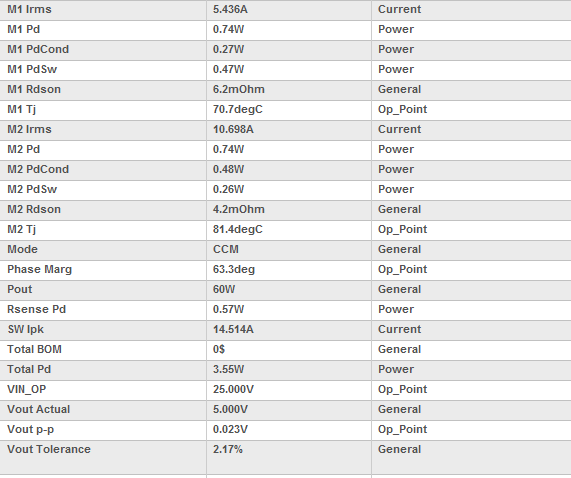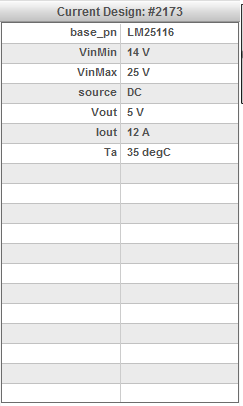Below is a link to an LM25116 design I'm working on. M1/M2 Rdson & PdCond values are 0 in the Op Vals report. Is this a bug or am I missing something?
This is my first post. Is this the proper way to post a link to a design? I used the Share Design feature before but don't know how to post a design to this forum.



